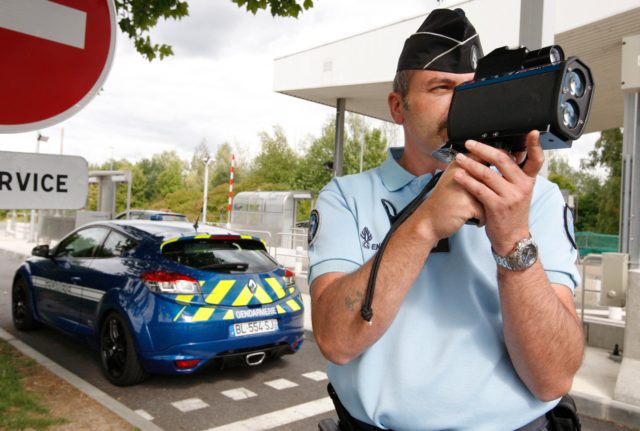If you’ve overcome the hurdles involved in obtaining an Italian driver’s licence or patente di guida, either by passing an Italian driving test or converting your foreign licence, you’ll want to do everything in your power to keep ahold of it.
To make sure of this, it’s important to know which infractions could led to the loss of your licence; but first, we need to differentiate between the different types of sanctions that can be applied under Italian law.
READ ALSO: Step by step: How to swap your UK driving licence for an Italian one
In Italy, you could have your driver’s licence ritirata (confiscated), sospesa (suspended), or revocata (revoked), each of which is applied in different circumstances and triggers different penalties.
A ritiro della patente (immediate licence confiscation) occurs when you’re stopped by a traffic officer who finds some irregularity with your documents or has caught you violating road laws.
If you’re guilty of a fairly minor infraction, such as driving with an expired licence, your licence will be held by the authorities until you renew it.
If, by contrast, you’re found to have violated the Highway Code in some significant way (such as driving while intoxicated or going more than 40km over the maximum speed limit), the ritiro will lead to a temporary suspension.
READ ALSO: The key vocabulary you’ll need for taking your driving test in Italy
A sospensione could last anywhere from 15 days to five years, depending on the severity of the offence – though month-long suspensions are the most common.
The revoca della patente is far more serious than either the ritiro or sospensione, as it typically means you’ve been permanently stripped of your licence.
In most cases, you’ll have to retake the test from scratch, no sooner than two years after losing your licence. You’ll be considered a new driver under the law, subject to heavier restrictions on speed limits and the types of vehicle you can drive.
Here are the circumstances in which your licence could be ritirata, sospesa or revocata.
Il ritiro della patente can happen when:
– You’re caught driving with an expired licence.
– You’re caught driving under the influence.
– You fail to give priority to other vehicles when required to.
– You’re involved in an accident that resulted in injuries.
– You don’t adequately rearrange a precariously-balanced load after the police have told you to.
– You don’t take a roadworthiness test (which might have been ordered either because you’ve lost all of the points on your licence or because there are doubts over your physical, mental, or technical abilities) within the required timeframe.
READ ALSO: Did you know…? Italy can fine you over €3,300 for speeding
La sospensione della patente can happen when:
– As a new driver, you don’t respect the new driver vehicle and speed limits.
– You exceed the speed limit by more than 40 km/h.
– You drive in the emergency lane in violation of the Highway Code.
– You’re caught driving under the influence or refuse to submit to an alcohol/drug test when stopped.
– You’re involved in a hit-and-run.
– You’re caught driving in a vehicle that’s been impounded.
– You’re driving with falsified or counterfeit insurance documents.
– You’ve temporarily lost certain physical or mental faculties.
– You’re driving a vehicle that requires a different kind of licence to the one in your possession.
La revoca della patente can happen when:
– You drive while your licence is suspended.
– You drive the wrong way on a motorway.
– You permanently lose certain physical or mental capacities.
– You don’t meet certain ‘moral requirements‘ (you’ve been convicted of certain crimes related to drug trafficking or are considered a habitual or career criminal).
– Your licence is replaced by one issued by a foreign state.
– You fail a roadworthiness test.
See more updates and practical guides in The Local’s Italian driving section.



 Please whitelist us to continue reading.
Please whitelist us to continue reading.
Member comments